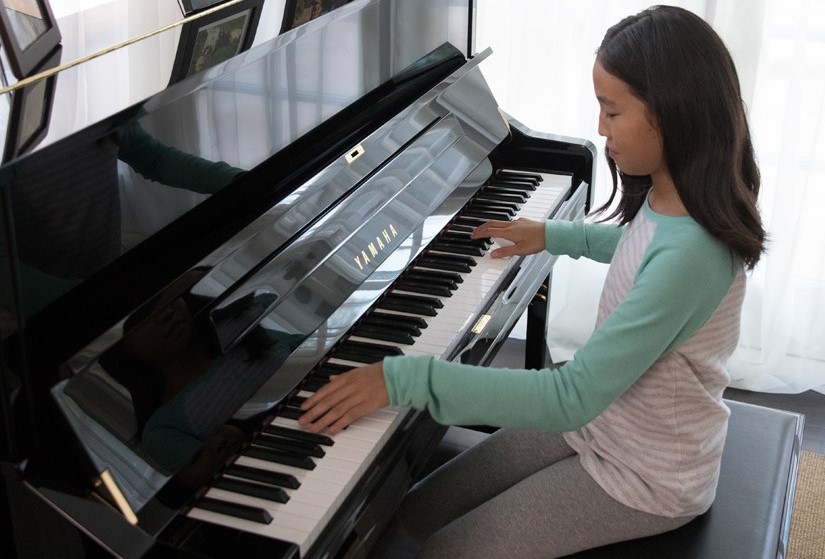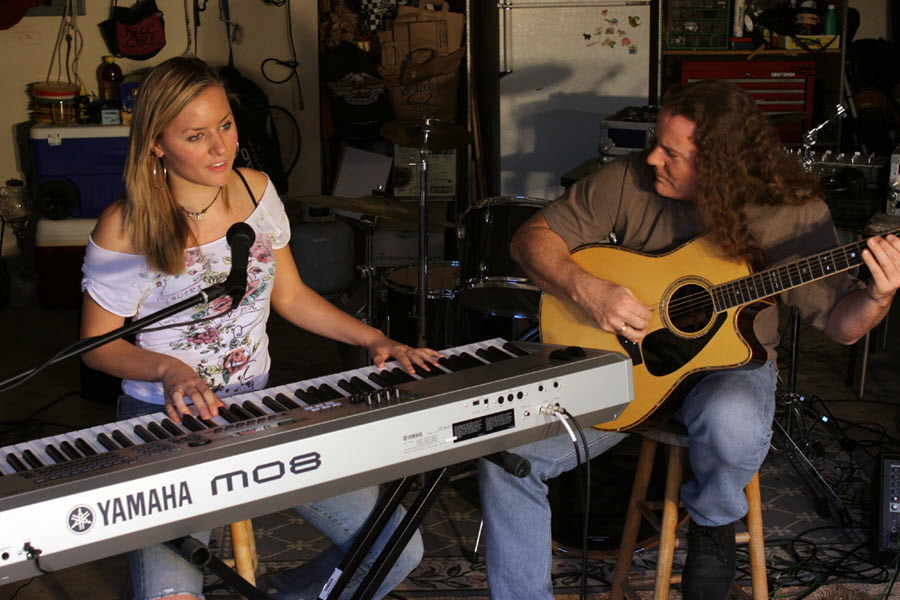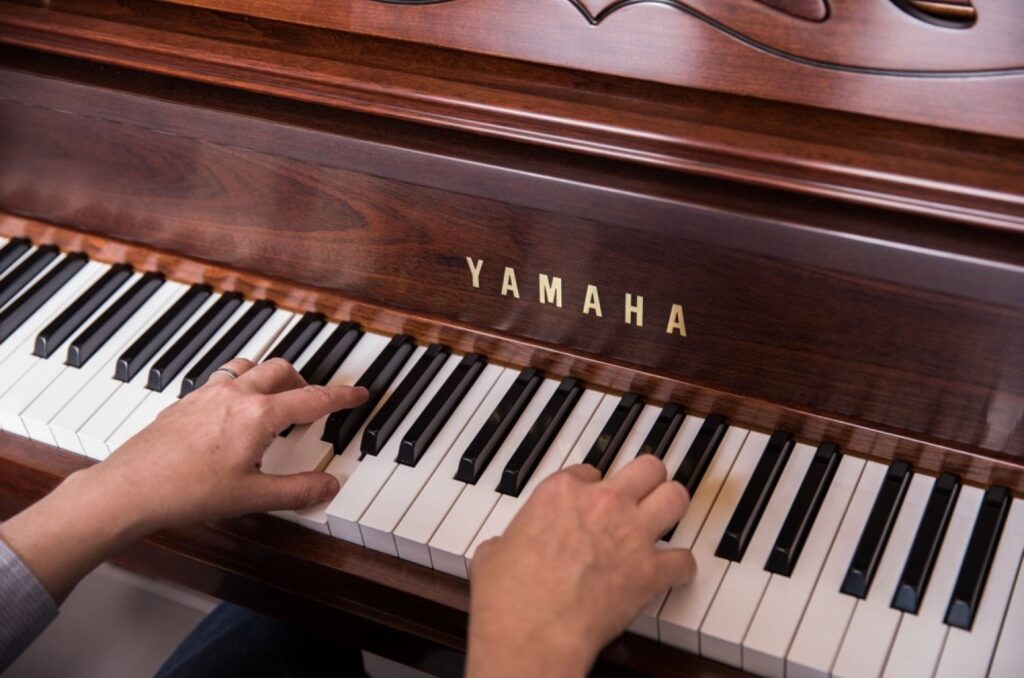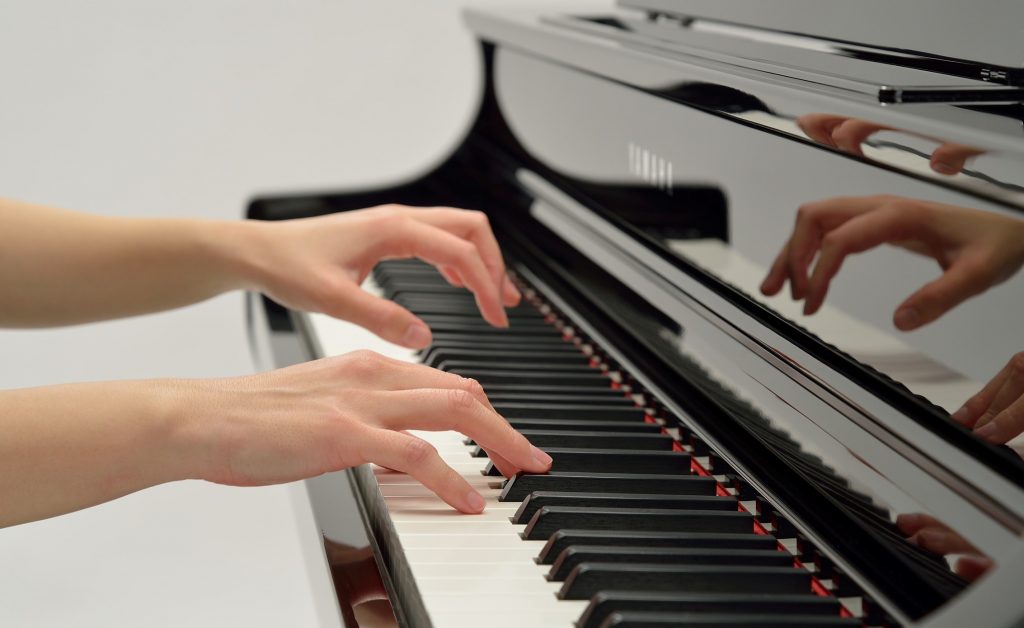Tagged Under:
How to Play Electric Piano, Clavinet and Organ Sounds
Here are the best ways to adapt your playing style to these three types of sounds.
There are many instruments that feature the familiar black and white keys of the piano. But don’t be fooled into thinking that, if you can play one, you will sound good playing all the others. Each instrument has its own design and sound, and requires some adjustment to your technique and style of playing.
The Four Main Food Groups
When it comes to keyboard instruments, there are four main “food groups,” as follows:
1. Acoustic Piano
The center of this universe is the acoustic piano, invented over 500 years ago and a mainstay of many genres of music, including classical music as well as jazz and pop. There are two main types: grand piano and upright piano. Check out this blog to learn the difference between them.
2. Electric Piano
The electric piano is an electro-mechanical derivation of the acoustic piano with a thicker, more “chimey” type of sound due to the fact that its hammers strike metal bars or reeds instead of strings. Although it was invented in the 1920s, the instrument came to prominence in the 1970s, where it became a staple of many forms of popular music, including jazz-rock and fusion.
3. Clavinet
The Clavinet is another electro-mechanical instrument, but one that is more closely related to the clavichord that had a distinctive metallic sound and was used widely in the Baroque and Renaissance eras. Clavinet sounds became a staple of the funk music of the 1970s, and, while not as popular today, can often come in handy when playing cover songs of the era.
4. Organ
Organ describes a family of keyboard musical instruments characterized by their sustained tone. There are many different types of organs, including pipe organs (mostly the domain of liturgical and secular music), “combo” organs (featured prominently in some pop and rock records of the 1950s and early 1960s) and tonewheel organs (used extensively in blues, jazz and rock — especially the prog rock of the 1970s and 1980s). If you’re learning a specific song, you can research it on the internet to find out what particular organ was used on the original recording.
Most current digital “portable” keyboards, digital pianos and stage pianos include sounds that were sampled from these four instruments, and learning how to play them correctly will help your music sound better. Since previous Well-Rounded Keyboardist blog posts have covered piano technique in some detail, I’ll assume you already have some familiarity and experience playing piano. In this article, I’ll provide some tips for adapting your playing style to electric piano, clavinet and organ sounds.
Playing Electric Piano Sounds
The electric piano has a thicker tonality than acoustic piano — especially “Rhodes”-style sounds — so you need to consider playing smaller chord voicings, using fewer notes. You should also avoid playing octaves in your left hand — something you’ll often do on acoustic piano. For example, here’s a basic, powerful way you might play a C Major chord on an acoustic piano:
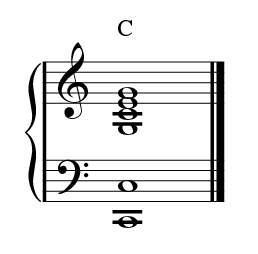
When playing an electric piano sound, however, it’s better to simplify the voicing, like this:
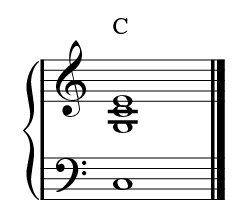
In addition, when playing solo acoustic piano, it’s common practice to adopt a broken left-hand “stride” style, where you play a low bass note, sustain it using the damper pedal, and then jump up with the left hand to add a chord in the range below middle C, like this:
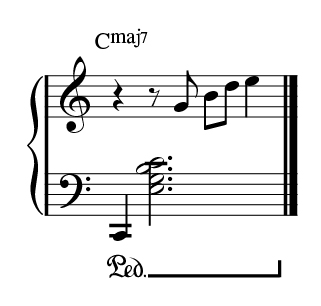
This doesn’t translate well to electric piano, however, so it’s better to lift the pedal before playing the chord:
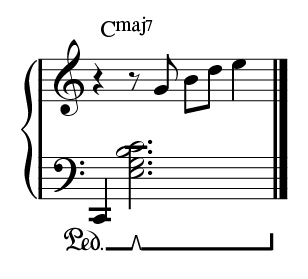
In general, you should avoid holding down the sustain pedal during long passages when playing electric piano sounds, period. Doing this on acoustic piano produces a nice dreamy wash of sound, but on electric piano everything can quickly get jumbled and muddy-sounding if you’re not careful, so you need to pedal more often to keep the sound from becoming overbearing.
Electric pianos can vary tonally quite a bit, and the more earthy and hollow “Wurly” varieties work especially well when playing bluesy riffs and licks. In addition, those sounds “speak” nicely when played in a rhythmic and dynamic fashion, like this:
Playing Clavinet Sounds
The clavinet has a much thinner and string-based sound that is not unlike that of an electric guitar. Players of the original instrument back in the ’70s developed a very rhythmic, busy 16th-note style to get a super-funky feel (think Stevie Wonder’s “Superstition”). If you picture how bass lines are crafted for R&B music and then include some right-hand rhythmic figures, you’ll be on your way to playing clavinet sounds realistically.
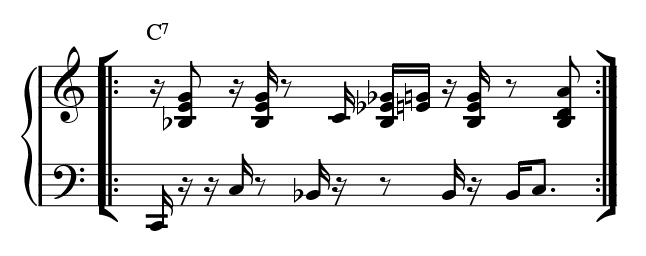
In general, the chords you’ll base your parts on should be simple ones: mostly minor sevenths and dominant sevenths (with either a sharp ninth or natural one). No other alterations or color tones are needed.
Playing Organ Sounds
The organ is the most different keyboard out of the group that we’re discussing here. That’s because it sustains indefinitely, while all the others decay over time. Because of this, in general you should play more open and less busy parts when playing organ sounds.
Organ is used in many genres of music, so I won’t make any general recommendations about types of chords — just use the harmony that is appropriate for the genre you’re playing. Here’s an example of how a basic chord progression can be played using the kind of classic “combo” organ sound you’d find in the pop and rock records of the 1950s and 1960s:

Note: This audio clip played using a software emulation of a vintage Yamaha YC-10 combo organ.
As a rule, you should never use the sustain pedal when playing an organ sound. Organists connect chords and phrases together using smooth fingering choices only and will sometimes slide across the keys to get to the next chord.
Since organ is a sustaining sound, you should consider not playing down too low if you’re performing with a bass player — leave them some space so your instruments are not fighting one another in the same frequency area. That’s why you’ll sometimes see the organist playing with their right hand only, while using their left hand to operate other controls or to play another keyboard. That said, in jazz and blues it is common for the organ player to also cover the bass part, so the only chording will be done with the right hand. These genres will also at times use voicings that require you to stretch your hand a little, like this:

Note: This audio clip played using a software emulation of a tonewheel organ.
If you’re playing a sample of a tonewheel organ, you need to be aware that a big part of the sound is that of the rotating speaker that it is usually played through. These rotating speaker systems offer two speeds — fast and slow — and it is common for the organist to change between them while playing held chords. Your keyboard will most likely have a control like a footswitch or a button to allow you to “virtually” change speeds as you play. Here’s an example of what switching from the slow to fast speed and then back down sounds like.
Note: This audio clip played using a software emulation of a tonewheel organ.
Notice how it takes a little bit of time to spin up to full speed, and how the return back to slow speed occurs quicker — something that’s typical of the way the motors in a physical rotating speaker system work.
Check out this related posting: Layering Digital Keyboard Sounds
All audio clips played on a Yamaha P-515 except where noted.
Check out our other Well-Rounded Keyboardist postings.
Click here for more information about Yamaha keyboard instruments.










